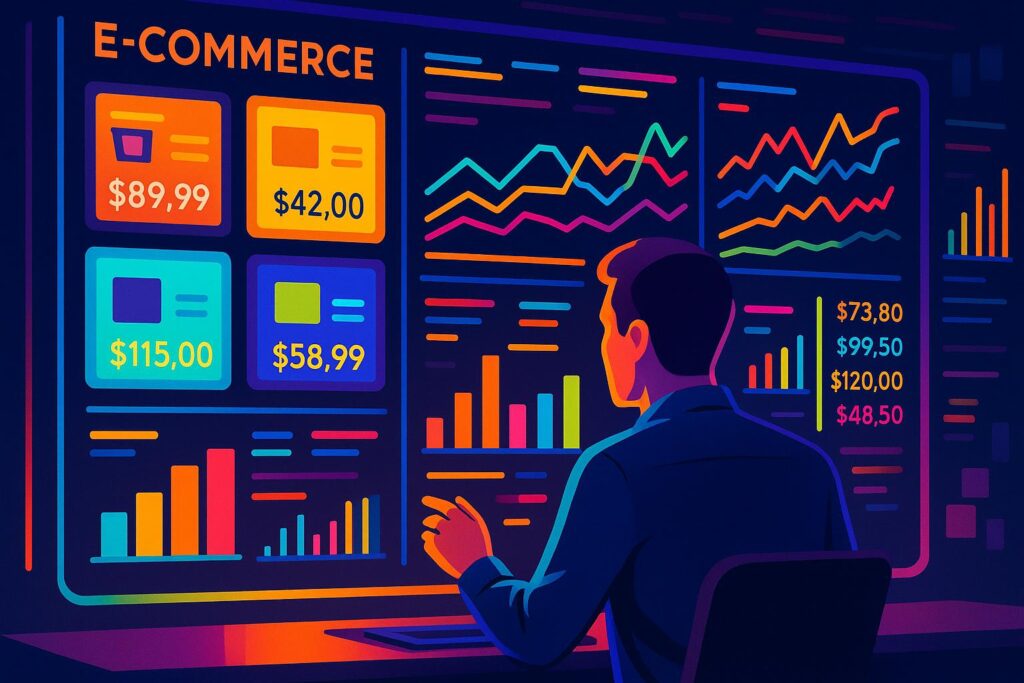Listen to the article
As the e-commerce sector becomes ever more competitive, innovative web scraping technologies unlock real-time data insights, enabling retailers to adapt pricing, optimise product offerings, and uphold brand integrity in a rapidly shifting market landscape.
In the fiercely competitive e-commerce sector, the ability to access and act on real-time data is increasingly vital for maintaining an edge. Businesses that harness web scraping technology to gather timely and accurate information about competitors often find themselves better positioned to make strategic decisions that can drive profitability and market share.
A cornerstone of this approach is real-time pricing strategy. By continuously tracking competitors’ prices, e-commerce retailers can identify changes such as price hikes, reductions, or promotional discounts almost as they happen, rather than discovering them days later. This immediate visibility allows companies to adapt their pricing dynamically to stay competitive, exploiting opportunities or responding to threats swiftly. Furthermore, businesses can benefit from compiling historical pricing data, which often reveals predictable patterns linked to holidays, product launches, or seasonal demand. Such insights enable more accurate price forecasting and strategic planning for the future.
Beyond pricing, understanding competitors’ product assortments is critical. Web scraping can uncover the range and type of products competitors offer, highlighting gaps in a company’s own catalogue or pointing to potentially high-demand items to consider adding. Tracking changes in competitors’ inventories, including which products are promoted or stocked out, offers key intelligence on market trends and supply chain dynamics. For instance, a persistently out-of-stock status on a popular item might indicate strong demand or supply chain constraints, suggesting an opportunity to capture unmet customer needs by adjusting marketing efforts or stock levels accordingly.
Customer reviews present another valuable data source, offering direct insight into product strengths, weaknesses, and unmet needs. Scraping reviews and performing sentiment analysis across multiple platforms enables companies to detect emerging trends and areas for product differentiation without the immense manual effort that such data collection would otherwise require.
An additional strategic application of web scraping is in enforcing Minimum Advertised Price (MAP) policies. For brands operating across various sales channels, unauthorized sellers and pricing violations can erode brand value and confuse consumers. By systematically monitoring prices and stock availability across thousands of sellers, companies can pinpoint violations early and initiate compliance actions to maintain pricing integrity in the marketplace.
Industry-leading solutions extend these capabilities with advanced features. Platforms like Priceva offer automated tools for real-time monitoring of competitor prices, stock levels, and product specifications, supporting dynamic pricing adjustments tailored to diverse business needs. Oxylabs specialises in large-scale data gathering that integrates competitor pricing and consumer behaviour analytics to enable automated, demand-responsive pricing models. Similarly, Real Data API provides automated data feeds that empower retailers to swiftly react to market shifts, thereby supporting profit optimisation through effective dynamic pricing.
Moreover, firms like X-Byte leverage ecommerce web scraping to refine product assortment strategies by identifying trending products, lifecycle patterns, and emerging brands, enabling quicker product launches, targeted promotions, and competitive benchmarks. DataSeeders further underscores the value of integrating consumer behaviour data with competitor pricing and inventory monitoring to create personalised pricing strategies that boost competitiveness and margins. Web Scraping HQ adds that detecting seasonal and promotional pricing trends, combined with real-time stock insights, facilitates rapid price adjustments aligned closely with market conditions.
In summary, the adoption of a robust web scraping strategy offers e-commerce businesses comprehensive competitive intelligence—from pricing and product assortment to inventory status and customer sentiment. This data-driven approach enables companies not only to anticipate and respond to market changes swiftly but also to discover niche opportunities and maintain brand control, ultimately contributing to better-informed strategic decisions and improved business outcomes.
📌 Reference Map:
- Paragraph 1 – [1], [6]
- Paragraph 2 – [1], [2], [3], [4], [6]
- Paragraph 3 – [1], [5], [7]
- Paragraph 4 – [1]
- Paragraph 5 – [2], [3], [4]
- Paragraph 6 – [5], [6], [7]
- Paragraph 7 – [1]
Source: Fuse Wire Services


